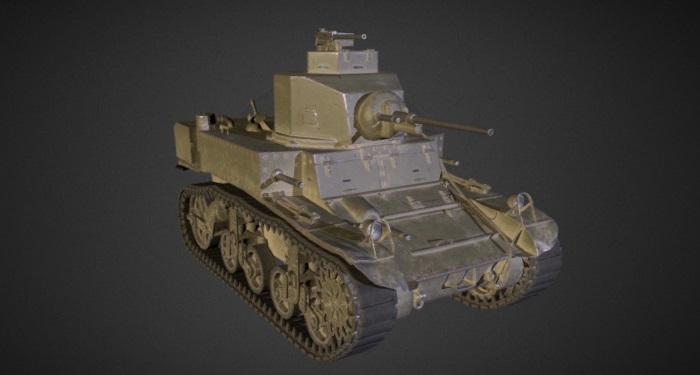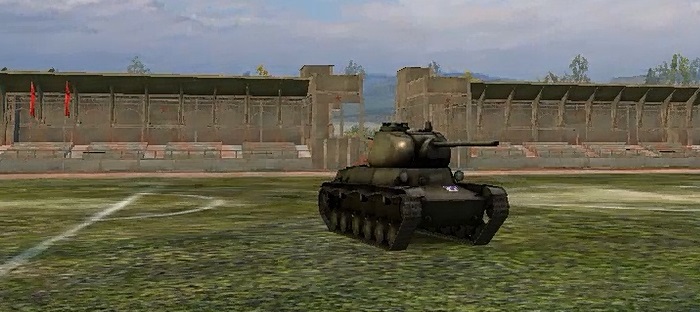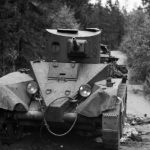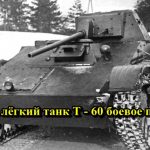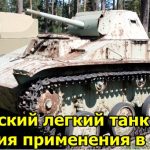The Soviet light tank BT-7 was designed by the KB KHPZ under the leadership of AO Firsov in 1933-1934. It was a modernized tank BT-5. The tank was to become a shock wheeled-caterpillar long-range tank.
The light tank BT-7 differed from the BT-5 tank by the new design of the welded armored body, the installation of the carburetor engine M-17T and the introduction of another track.
The prototype was manufactured by May 1, 1934, and in the last quarter of the same year, serial production of the tank was organized. By the end of 1939, 2,596 line tanks and 2,017 tanks with a radio station were produced.
The light tank BT-7 was armed with a 45 mm tank gun of the 20K model of 1934 and coupled with it a 7.62 mm DT machine gun. The gun ammunition consisted of 172 rounds for a linear tank and 132 shots for a tank with a radio station. The number of cartridges for the DT machine-gun was reduced to 2394 pieces. Part of the BT-7 tanks since 1936 were armed with an anti-aircraft machine gun mounted on a P-40 unit. In 1936, the BT-7 tanks were equipped with searchlights for directional shooting at night, and in 1938 the searchlights were canceled. Since the end of 1938, a light tank BT-7 began to be armed with a 45-mm gun of the 1938 model with an electric descent and a stabilized sight of the TOP-1.
Soviet light tanks BT-7 were in service with tank brigades of tank corps, and also entered separate tank brigades. In accordance with the theory of a deep offensive operation, light tanks BT-7 were assigned the role of developing a breakthrough into the depth of enemy defense. During the production of BT-7 tanks, he was not equal in the running and maneuverable data.
Soviet light tanks BT-7 were in service with tank brigades of tank corps, and also entered separate tank brigades. In accordance with the theory of a deep offensive operation, light tanks BT-7 were assigned the role of developing a breakthrough into the depth of enemy defense. During the production of BT-7 tanks, he was not equal in the running and maneuverable data.
However, the Soviet light tank BT-7 passed through the military conflicts of the USSR, participated in the Great Patriotic War and passed it to the end. It became a symbol of the Soviet auto-armored structure 1930-1940, creating the idea of tanks as the main strike force of the ground forces.
Soviet light tanks BT-7 were used in combat operations on the river. Khalkhin – Gol in Mongolia, on the Karelian Isthmus, in the liberation campaign to Western Ukraine and Belarus, in the Great Patriotic War and in the defeat of Japanese troops in Manchuria in 1945.
Combat operations of the Soviet light tank BT-7 were used by the second motorized brigade because of the Japanese units invading Soviet territory on July 29, 1938, who captured the height of Nameless. On the same day it was repulsed, and on July 31 again after a fierce battle was occupied by the Japanese. Tankmen who participated in this battle had to undergo difficult weather conditions, impassability, swampy terrain and provide infantry with advancement. Tankmen carried losses from Japanese artillery. And only after a massive bombardment and artillery fire it was possible to expel the Japanese from the occupied territory. On August 11, Lake Hasan was stopped.
At the end of May 1939, near the Khalkhin-Gol river, the Japanese aggressors launched full-scale military operations against Soviet-Mongolian troops. Thanks to the high-speed qualities of the BT-7 tank, the 11th Tank Brigade made a swift 750-kilometer march along the Mongolian steppes from the concentration area to the battle site and immediately attacked the Japanese near the Bain-Tsagan hill. from the fire of enemy artillery, the 11th Tank Brigade lost half its tanks, as well as half of its personnel. The tanks burned like torches. But the tank brigade fulfilled its task. On September 16, fighting ceased. on the site of fighting near the hill Bain-Tsagan installed a stele, and next to the pedestal – a tank BT-5.
A special great tension, perseverance and heroism were required by tank units in battles during the breakthrough of the Mannerheim Line in the winter of 1939-1940 on the Karelian Isthmus. Tankmen and infantry suffered heavy losses, but all the same the combined forces broke through the Mannerheim Line and, bypassing the enemy in the areas of Vyborg, Keksgolm and Sortavala, broke the resistance of the Finnish army.
On June 22, 1941, the Soviet tanks of the BT of all series were among the first to take the attack of the troops of the German Wehrmacht that had invaded our territory. By July 1941, virtually all tanks that were part of the fighting fronts of BT-2 were lost. A large number of machines were destroyed in the first hours and days. The defending divisions were not ready for a clash with the German army, the units had limited ammunition and fuel resources. In the first days of the battles showed that BT tanks can successfully resist only German tanks Pz 1 and Czech LT-35. Against the more advanced German tanks, they were powerless.
[utubevideo id=”10″]


